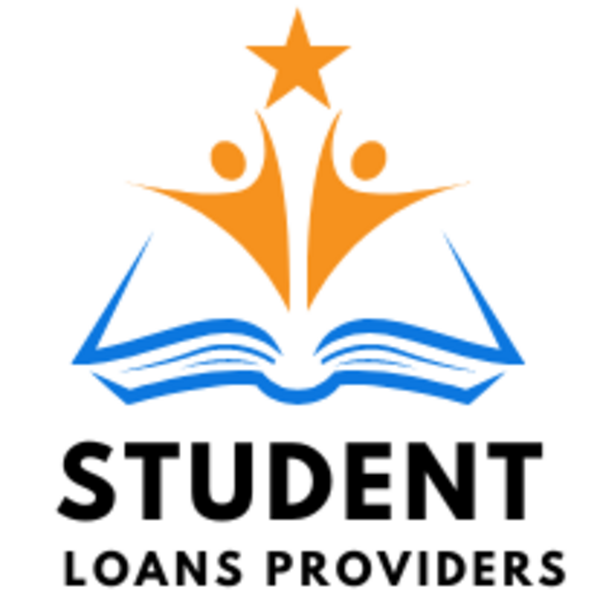Survivors’ and Dependents’ Educational Assistance Program
Explore educational assistance for survivors and dependents. Learn about benefits, eligibility, and how to apply for this valuable program

Explore Direct Unsubsidized Stafford Loans: Low-interest federal loans for eligible students. Learn eligibility, rates, and repayment options here
Student loans are a common financial tool for individuals pursuing higher education, providing the means to cover tuition, books, and other educational expenses. Among the various types of student loans, the Direct Unsubsidized Stafford Loan is a popular choice. In this comprehensive guide, we will delve into the details of the Direct Unsubsidized Stafford Loan, exploring its features, benefits, eligibility criteria, application process, and repayment options.
Table of contents [Show]
The Direct Unsubsidized Stafford Loan is a federal student loan available to eligible undergraduate and graduate students. Unlike subsidized loans, the unsubsidized variant accrues interest from the time it is disbursed. This means that even though students are not required to make payments while in school, interest continues to accumulate, increasing the overall amount owed.
Interest Accrual: As mentioned, the key feature of the Direct Unsubsidized Stafford Loan is that interest accrues throughout the life of the loan. This is different from subsidized loans where the government covers the interest while the borrower is in school or during deferment periods.
Loan Limits: The loan limits for Direct Unsubsidized Stafford Loans vary based on the student's academic level (undergraduate or graduate) and dependency status. Independent students generally have higher loan limits.
No Credit Check: The Direct Unsubsidized Stafford Loan does not require a credit check, making it accessible to a broader range of students. Eligibility is primarily determined by enrollment status and the completion of the Free Application for Federal Student Aid (FAFSA).
Flexible Repayment Options: Repayment of Direct Unsubsidized Stafford Loans typically begins six months after graduation, leaving room for students to find stable employment. Additionally, various repayment plans, including income-driven options, provide flexibility for borrowers facing financial challenges.
To qualify for a Direct Unsubsidized Stafford Loan, students must meet certain eligibility criteria. These criteria include:
Enrollment in an Eligible Program: Students must be enrolled at least half-time in a program leading to a degree or certificate at an eligible institution.
Citizenship: Borrowers must be U.S. citizens, U.S. nationals, or eligible non-citizens.
FAFSA Completion: The completion of the Free Application for Federal Student Aid (FAFSA) is a prerequisite for obtaining a Direct Unsubsidized Stafford Loan. The FAFSA determines the student's financial need and aids in calculating the loan amount.
Not in Default on Previous Federal Loans: Students should not be in default on any existing federal student loans.
Applying for a Direct Unsubsidized Stafford Loan involves a series of steps:
Complete the FAFSA: The first step is to complete the Free Application for Federal Student Aid (FAFSA). This form gathers information about the student's financial situation and helps determine eligibility for federal student aid programs.
Review Financial Aid Offer: After submitting the FAFSA, students receive a financial aid offer from their school, outlining the types and amounts of aid they are eligible to receive. This includes any Direct Unsubsidized Stafford Loans.
Accept or Decline the Loan: Students can choose to accept or decline the offered Direct Unsubsidized Stafford Loan. It's essential to carefully review the terms and conditions before making a decision.
Complete Entrance Counseling: First-time borrowers are required to complete entrance counseling, which provides information about the loan's terms, conditions, and repayment.
Sign a Master Promissory Note (MPN): To formalize the loan agreement, borrowers must sign a Master Promissory Note (MPN), which is a legal document outlining the terms and conditions of the loan.
Disbursement of Funds: Once all requirements are met, the loan funds are disbursed to the school, usually in multiple installments over the academic year.
Repaying a Direct Unsubsidized Stafford Loan is a significant consideration for borrowers. The standard repayment plan typically spans ten years, but there are alternative options, including:
Income-Driven Repayment Plans: These plans base monthly payments on the borrower's income, making them more manageable during periods of lower earnings.
Extended Repayment Plan: This plan extends the repayment period beyond ten years, reducing the monthly payment amount.
Graduated Repayment Plan: Payments start lower and then increase over time, generally every two years.
Deferment and Forbearance: In cases of financial hardship, borrowers may qualify for deferment or forbearance, temporarily postponing or reducing payments.
Interest rates for Direct Unsubsidized Stafford Loans are set by the federal government and can vary based on the loan's disbursement date. It's essential to be aware of the current interest rates and how they may impact the overall cost of the loan.
Understanding the advantages and disadvantages of Direct Unsubsidized Stafford Loans is crucial for borrowers:
Accessibility: The loans are accessible to a wide range of students without the need for a credit check.
Flexibility: Various repayment options offer flexibility to borrowers, adapting to their financial situations.
No Financial Need Requirement: Unlike subsidized loans, which are need-based, Direct Unsubsidized Stafford Loans do not require the borrower to demonstrate financial need.
Accrual of Interest: Interest accumulates from the time of disbursement, potentially leading to a higher overall repayment amount.
Loan Limits: There are limits to the amount that can be borrowed, which may not cover the full cost of education for some students.
No Interest Subsidy: Unlike subsidized loans, where the government covers interest during specific periods, borrowers are responsible for all interest accrued on Direct Unsubsidized Stafford Loans.
The Direct Unsubsidized Stafford Loan is a valuable resource for students seeking financial assistance for their education. By understanding its features, eligibility criteria, application process, and repayment options, borrowers can make informed decisions about incorporating this loan into their overall financial plan. As with any financial commitment, careful consideration and planning are essential to ensure a successful educational journey with manageable debt upon graduation.
What is a Direct Unsubsidized Stafford loan?
A Direct Unsubsidized Stafford loan is a federal student loan available to eligible undergraduate and graduate students to help cover the cost of education.
How do I qualify for a Direct Unsubsidized Stafford loan?
To qualify, you must be enrolled at least half-time in a degree program at a participating institution, and you must meet other federal student aid eligibility requirements.
What's the difference between subsidized and unsubsidized Stafford loans?
Unlike subsidized loans, unsubsidized Stafford loans accrue interest while you're in school. Subsidized loans do not accrue interest during certain periods.
What is the current interest rate for Direct Unsubsidized Stafford loans?
The interest rate for Direct Unsubsidized Stafford loans varies depending on when the loan is disbursed and other factors. Check with the U.S. Department of Education for the most up-to-date rates.
Do I need to demonstrate financial need to get a Direct Unsubsidized Stafford loan?
No, you don't need to demonstrate financial need to qualify for an unsubsidized loan. However, you must complete the Free Application for Federal Student Aid (FAFSA).
How much can I borrow with a Direct Unsubsidized Stafford loan?
The amount you can borrow depends on your year in school, your dependency status, and other factors. There are both annual and aggregate loan limits.
Do I need a cosigner for a Direct Unsubsidized Stafford loan?
No, cosigners are not required for federal student loans like the Direct Unsubsidized Stafford loan.
When do I need to start repaying my Direct Unsubsidized Stafford loan?
Repayment typically begins six months after you graduate, leave school, or drop below half-time enrollment.
What are the repayment options for Direct Unsubsidized Stafford loans?
There are several repayment plans available, including standard, graduated, income-driven, and extended repayment plans.
Can I defer my Direct Unsubsidized Stafford loan payments?
Yes, you may be eligible for deferment or forbearance under certain circumstances, such as returning to school or experiencing financial hardship.
Are there any fees associated with Direct Unsubsidized Stafford loans?
Yes, there is a loan origination fee that is deducted from each disbursement of your loan.
Can I use a Direct Unsubsidized Stafford loan to pay for living expenses?
Yes, you can use the funds from your loan to cover educational expenses, including room and board, in addition to tuition and fees.
Is the interest on a Direct Unsubsidized Stafford loan tax-deductible?
In some cases, you may be able to deduct the interest you paid on your student loans when filing your taxes. Consult with a tax advisor for guidance.
Can I consolidate my Direct Unsubsidized Stafford loans?
Yes, you may be able to consolidate multiple federal student loans, including Direct Unsubsidized Stafford loans, into a single loan with a fixed interest rate.
What happens if I default on my Direct Unsubsidized Stafford loan?
Defaulting on your loan can have serious consequences, including damage to your credit score, wage garnishment, and withholding of tax refunds.
Explore educational assistance for survivors and dependents. Learn about benefits, eligibility, and how to apply for this valuable program
Discover the benefits of the Montgomery GI Bill for military service members. Get education and training assistance. Learn more now
Unlock your future with the Post 9/11 GI Bill. Get education benefits for veterans. Pursue your dreams with tuition, housing, and more covered

